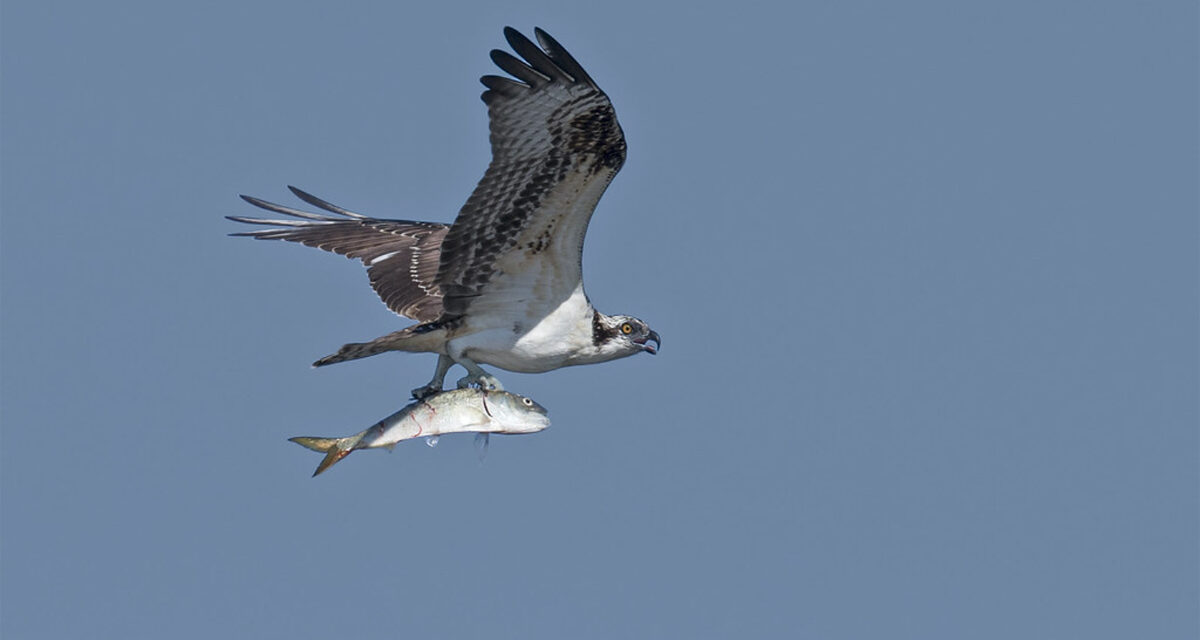
Chesapeake Bay Ecosystem Crisis Deepens as Menhaden Population Decline Threatens Key Species
TL;DR
Exelon Corp plans to build a Maryland power plant, reversing 26-year utility deregulation policy that could reshape the state's energy market.
Federal judges issued orders requiring USDA to continue SNAP benefit payments during the government shutdown, with temporary restraining orders in place.
Judges intervened to protect food assistance for 42 million vulnerable Americans, preventing hunger during the ongoing government shutdown crisis.
Atlantic menhaden, a nutrient-rich fish vital to Chesapeake Bay's ecosystem since pre-Colonial times, faces decline affecting osprey and striped bass populations.
Across the Chesapeake Bay, fishermen are reporting significantly reduced catches of striped bass, while osprey populations show alarming signs of distress with many birds ceasing to lay eggs and surviving chicks often starving in their nests. These ecological warning signs appear directly connected to the faltering health of Atlantic menhaden, a small but critically important fish species that serves as the primary food source for larger bay predators and has been harvested by bay communities since pre-Colonial times.
The menhaden crisis represents a complex environmental and economic challenge, pitting conservation efforts to save the estuary's cherished osprey and striped bass against the livelihood of hundreds of Virginia workers who depend on the menhaden fishery. This fishery stands as the last remaining operation of its kind along the entire Atlantic seaboard, making the conservation versus employment balance particularly delicate. The nutrient-rich menhaden plays such a fundamental role in the bay's food web that its decline threatens to unravel the entire ecosystem's stability.
Scientific evidence increasingly points to menhaden scarcity as the primary driver behind the osprey and striped bass population declines. Osprey, once thriving throughout the Chesapeake region, now show reproductive failure rates that concern wildlife biologists and conservationists. Similarly, commercial and recreational fishermen report striped bass numbers at concerning lows, with many attributing the decline directly to the reduced availability of their primary food source.
The economic implications extend beyond the immediate fishing industry, potentially affecting tourism, recreational fishing, and the broader ecological services the bay provides to surrounding communities. Conservation groups argue that without immediate intervention to protect menhaden populations, the entire Chesapeake Bay ecosystem could face irreversible damage. Meanwhile, fishery representatives emphasize the importance of maintaining sustainable harvesting practices that balance ecological concerns with economic realities.
Regional policymakers face increasing pressure to develop management strategies that address both the urgent ecological crisis and the legitimate economic concerns of fishing communities. The situation highlights the complex interplay between environmental conservation and economic sustainability in managing shared natural resources. As scientific monitoring continues, stakeholders across the region await data that could inform future management decisions affecting both the bay's ecological health and the communities that depend on it.
The menhaden situation represents a microcosm of larger environmental challenges facing coastal ecosystems nationwide, where balancing economic interests with ecological preservation requires careful scientific assessment and collaborative policymaking. The outcome of this particular struggle could set important precedents for how similar conflicts are addressed in other vulnerable marine ecosystems along the Atlantic coast and beyond.
Curated from citybiz
